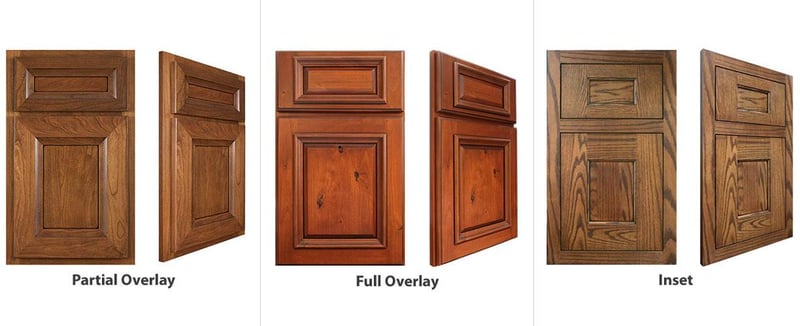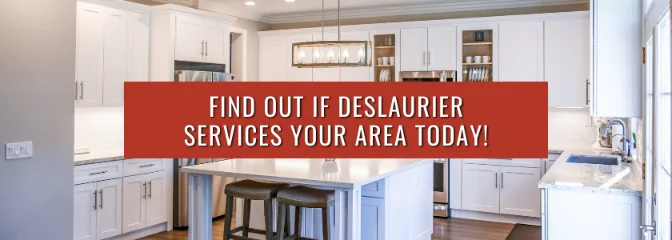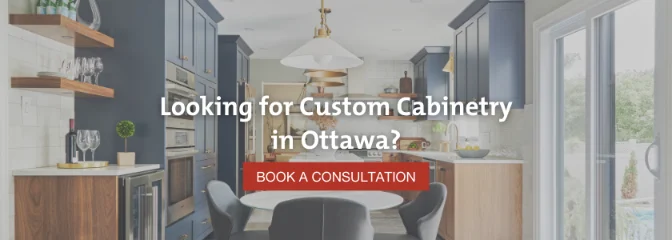6/12/2022 • Blog, Comparisons
Face Frame vs. Frameless Kitchen Cabinets
Estimated Read Time: 4 minutes
When it comes to your kitchen, there is no bigger investment than your kitchen cabinets.
But not all kitchen cabinets are the same. There are two overarching systems of cabinets: face frame and frameless.
So, what’s the difference?
At Deslaurier Custom Cabinets, we have over 40 years of experience specializing in providing our clients with high-quality, long-lasting custom cabinets. While we only manufacture frameless cabinets – similar to many of our fellow Canadian cabinet manufacturers (as you’ll learn below) – we’re familiar with the longstanding quality of face-frame cabinetry.
This article will compare face frame and frameless kitchen cabinets and take a look at the pros and cons of each cabinet type.
Let’s get started!
|
Table of Contents |
|
Advantages of Face Framed Cabinets Disadvantages of Face Framed Cabinets Advantages of Frameless Cabinets Disadvantages of Frameless Cabinets |
What Are Face Frame Cabinets?
Face frame cabinets have a face frame that is attached to and covers the front of the cabinet box.
This creates something of a picture frame for the front of the cabinet. The frame is made up of two vertical pieces called stiles combined with two horizontal pieces called rails.
Face frame cabinets are extremely popular in the United States and are commonly referred to simply as “American” style cabinets. They offer a more traditional design aesthetic with a touch of classic Americana.
Face Framed Cabinet Overlay
Cabinet overlay refers to the way the cabinet door interacts with the front casing of the cabinet box. Effectively, it constitutes how much of the face frame is visible.
There are three main types of cabinet overlay for face frame cabinets: inset, partial, and full.

Inset: Inset overlay is when the cabinet door fronts are slightly smaller than the openings and sit within the face frame. With this, the doors are flush with the frame, allowing the cabinet face frame to be entirely on display.
Partial: For a partial – or “standard” – overlay, the door and drawer fronts are slightly larger than the cabinet opening, gently overlapping onto the outer frame. A partial overlay leaves most of the cabinet face frame on display.
Full: Full cabinet overlay occurs when the door and drawer fronts are larger than the cabinet opening and overlap onto the frame. The difference between full and partial overlay is that full overlay all but covers the entire cabinet, leaving only a small portion of the face frame to be visible.
Advantages of Face Framed Cabinets
- Face framed cabinets offer a traditional, American aesthetic.
- They’re known for their strength and stability thanks to the sturdy face frame construction. The hardwood face frame helps keep the cabinet square (all 4 joints at a 90-degree angle), making it unlikely that they succumb to “racking” – which is when a cabinet box is forced out of the square.
- They provide flexible framing options with one of three different cabinet overlay styles.
Disadvantages of Face Framed Cabinets
- You’re limited to solid wood or MDF for your cabinet materials. Engineered materials such as thermofoil, melamine, or acrylic aren’t available.
- Face frame cabinets can also be restrictive in terms of overall design style. With this, face frame cabinets are generally reserved for kitchens with a traditional or farmhouse design.
- While the cabinets are the same size as frameless, the lip of the frame does act as somewhat of an obstacle and slightly reduces interior storage – as well as the ability to remove shelves.
- Similarly, drawers and rollouts in face frame cabinets also have slightly less interior space than frameless cabinets. Although it’s only 1” to 1.5” of reduced space per cabinet, that can add up throughout an entire kitchen’s worth of cabinetry.
What are Frameless Cabinets?
As the name suggests, frameless cabinets do not have a face frame. Instead, the cabinet doors and drawers close flush with the edges of the cabinet box.
Just as face frame cabinets are often referred to as American, frameless cabinets are considered to be a “European” style — which most Canadian manufacturers adhere to. For instance, at Deslaurier, we manufacture frameless custom cabinetry.
-4.jpg?width=763&height=508&name=Deslaurier_Sherwood(Darien)-4.jpg)
The popularity of frameless cabinets in the United States has increased immensely in the past two decades. This is in large part thanks to the expansion of IKEA and their frameless cabinets being colloquially known as “IKEA style” in America.
Advantages of Frameless Cabinets
- Full storage access that is more suitable for large dishware or bulky countertop accessories
- Contemporary, streamlined appearance
- Once thought to be less stable than their face-framed counterparts, high-quality modern-day frameless cabinets are extremely sturdy.
- You can even add an aesthetic face frame to frameless cabinets using trim and panelling. These additions are attached to the side of the cabinet box – rather than on the front frame – and result in an inset cabinet overlay appearance.
Disadvantages of Frameless Cabinets
- The door hinges are anchored to the inside of the cabinet box and will need adjusting more often than face frame cabinets. This is because frameless cabinet hinges are attached to the walls of the cabinet box, which are typically made from particleboard, a less stable material than the hardwood of a face frame.
- Frameless stock cabinets that are of lower quality can lack sturdiness. This can result in less stability and racking during installation.
Face Frame vs. Frameless Cabinets: The Verdict
As with most design choices, when it comes to face frame or frameless cabinets there really is no right or wrong answer. It’s a subjective decision that will come down to you and your household’s individual preferences.
Depending on where you live, you may not even get the option to choose between the two. Although you might be able to find face frame cabinet manufacturers in Canada, they are far less popular than frameless.
Ultimately, both face frame and frameless cabinets are quality products with similar pricing considerations. Choosing between the two will come down to your personal aesthetic preferences.
Design with Deslaurier Custom Cabinets
If you’re looking for frameless cabinets, Deslaurier Custom Cabinets has everything you need! With over 40 years of experience to our name, we provide our clients with a fully customized design process with our talented team of designers.
Book a consultation today with a Deslaurier design expert at our Ottawa Showroom or schedule a virtual meeting!
Interested in becoming an authorized Deslaurier dealer? Visit our Become a Dealer page to learn more! Live outside the area? Find a Dealer to connect with a Deslaurier dealer near you!
.png?width=224&height=80&name=Final%20(3).png)


